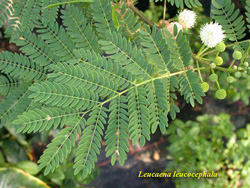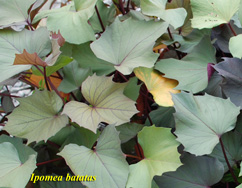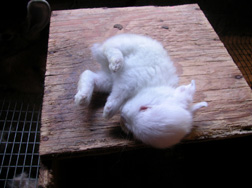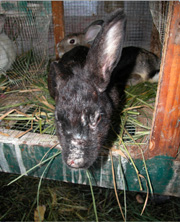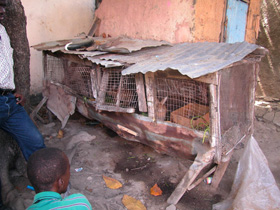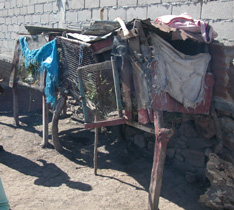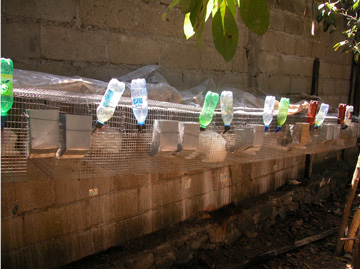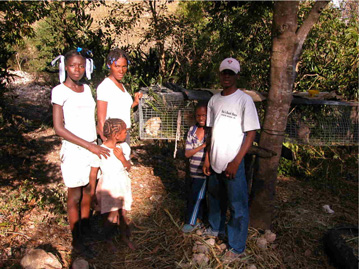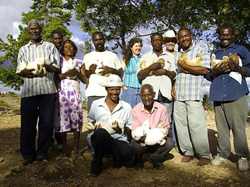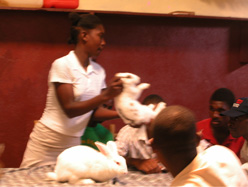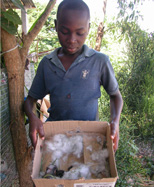WRSA - Rabbit production in developing countries
Promoting Entrepreneurial Opportunities
through Rabbit Production in Haiti
by Myriam Kaplan-Pasternak, D.V.M
|
In January 2007, I was invited to participate in a Farmer to Farmer program through Partners of the Americas, an American NGO funded largely by USAID. As a veterinarian, rabbit producer and former Peace Corps volunteer (Niger 1983-85), I had considerable expertise to offer the Haitians. Little did I know that this would be just the beginning of a long and extensive commitment to helping Makouti Agro Enterprises, a Haitian agricultural agency run by Benito Jasmin, develop the rabbit industry in Haiti.
|
||||||
| On my first visit, I observed that a great deal of progress had been made by prior volunteers. In the area of nutrition, all of the rabbits were fed a variety of legumes, forages, grasses, fruits and vegetables. Leucena and sweet potato vines were the most frequently used forages. Commercial feed from the Dominican Republic was found to be deficient in vitamin A, causing hydrocephalus in newborns. We switched these larger rabbitries to a combination of pellets and forage, which eliminated the problem. | ||||||
By far, the biggest problem I observed was the poor condition of the cages. We observed several cages built under James McNitt's tutelage. James McNitt, Ph.D., is a Rabbit Production Specialist and Professor of Animal Science at the Southern University Agricultural Research and Extension Center in Baton Rouge, Louisiana. These cages were the best and cleanest. The Haitians have had a difficult time locating enough cage wire in Haiti or the Dominican Republic. Adequate wire must be purchased in the United States with help from Friends of Haiti for Grand Boulage. Steps need to be taken to ensure a constant supply of wire for cages.
|
||||||
The most outstanding thing about these trips was the eagerness with which the Haitians took to rearing rabbits and the quality of their questions during lectures. With a clear understanding of the benefits or raising rabbits, they were eager to begin and expand. Their primary interest is income generation, with protein consumption being secondary. The value of rabbit manure is also rapidly taking hold; however, to properly care for their rabbits, they continue to need technical assistance, more breeding stock and materials to build adequate cages. |
||||||
|
Over the last two years, we have succeeded in importing good quality cage wire: 14 and 16 gauge - ½"x1" GAW (Galvanized After Welded), water bottle nipples, cage building tools and funds to educate people in new areas of the country. Makouti now has 15 rabbit trainers and four rabbit specialist technicians who oversee 790 rabbit producers throughout Haiti. These improvements have reduced kit losses, increased conception rates and improved conformation or physical condition. In 2008, the family rabbit production units averaged 120 rabbits sold (earning HTG 31,000, or US $775), consumed 41 rabbits and lost 132 rabbits. While there is still room for improvement, these sums are significant for a population in which 75 percent of the people earn less than US $1 each day. Also, production costs are nearly zero. The initial step-up costs per production unit, which includes a wire cage, two female rabbits, one male rabbit, water bottle nipples, group training (including meals, transportation, etc.) and follow-up visits by a trained technician, are about US $200. |
||||||
|
The following are key components
of Haiti's rabbit program that have led to its success:
|
||||||
| The current focus is on reaching out to people in new areas of the country and educating more producers in other villages as supplies become available. Lecture series are taught using 8x10 color photos, handouts and rabbits, when available. Students showing natural leadership tendencies are identified and encouraged to become trainers. Students make their own cages from materials purchased directly or through microcredit, or received as a donation. Generally, rabbits are introduced slowly to a new area. Initially, people receive a male rabbit. Then, one month later, they receive one or two females, as they become available. Prices for breeding stock are currently US $15 for males and $20 for females. The market price for rabbit meat varies from US $5-15 for approximately 2 pounds of meat. | ||||||
|
||||||
| Marketing rabbit meat is the next
major focus that we will venture into. In 2008, restaurants made up 23
percent of rabbit meat sales; hotels accounted for 5 percent, and private
families were responsible for 72 percent. In the future, we plan to increase
sales to hospitals, restaurants and hotels through chef demonstrations
and promotions. Processing and refrigeration facilities will be created
with plans for exportation.
Makouti's
slogan for the rabbit project is "Lapen pou lot demen,"
meaning "Rabbits for a better tomorrow." |


